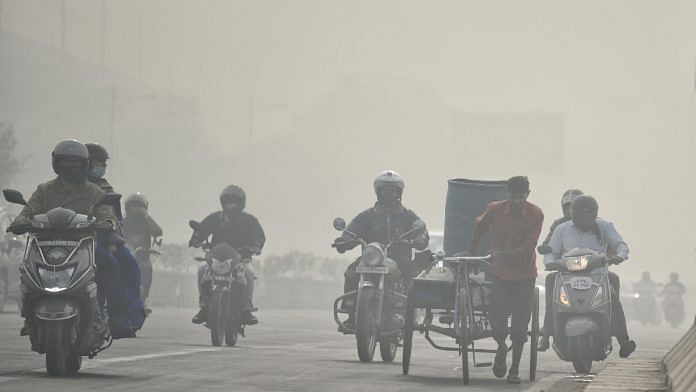New Delhi: After a gap of 15 years, the World Health Organization (WHO) released an updated version of the Global Air Quality Guidelines (AQGs) which outlines the recommended air quality levels to protect the health of populations based on the latest scientific evidence from across the world.
Since WHO’s last update in 2005, there has been a marked increase of evidence that shows how air pollution affects different aspects of health and makes continued exposure to it as deadly as other major global health risks such as unhealthy diet and tobacco smoking.
Every year, exposure to air pollution is estimated to cause 7 million premature deaths globally.
WHO’s new guidelines recommend air quality levels for six pollutants — particulate matter (PM), ozone (O₃), nitrogen dioxide (NO₂) sulfur dioxide (SO₂) and carbon monoxide (CO) — that are not just health hazards but they also give rise to other damaging pollutants.
The health risks associated with particulate matter equal to or smaller than 10 and 2.5 micrometers in diameter — known as PM 10 and PM 2.5 respectively — are of particular concern. These can penetrate deep into the lungs. PM 2.5 can even enter the bloodstream, leading to cardiovascular and respiratory diseases.
The 2021 guideline stipulates that the annual average for PM 10 should not exceed 15 micrograms per cubic metre of air, while the 24-hour average should not exceed 45 micrograms per cubic metre. Compared to this, the earlier limit was 20 micrograms per cubic metre annually and 50 micrograms per cubic metre in a day.
Similarly, the recommendation for PM 2.5 is that the annual average should not exceed 5 micrograms per cubic metre, or 15 micrograms per cubic metre in a day. The earlier limit was 10 micrograms per cubic metre annually and 25 micrograms per cubic metre in a day.
Other recommendations say the ozone levels average should not exceed 100 micrograms per cubic metre over a 24-hour period, nitrogen oxide should not exceed 25 micrograms per cubic metre, sulphur dioxide should remain below 40 micrograms per cubic metre and carbon monoxide levels should not exceed more than 4 micrograms per cubic metre over the same time period.
Also read: India’s poor face disproportionately higher risk of dying from air pollution than the rich — study
Urgent need to improve air quality
Anumita Roychowdhury, an executive director at the Centre for Science and Environment, said the key consideration in these guidelines was the effect on health and not the feasibility of achieving these levels.
“What scientific evidence is now showing is that these air pollutants are harmful to the health at much lower levels than what was understood in 2005,” she told ThePrint. Going by these standards, most Indians breathe unacceptable levels of pollutants.
To put these numbers in context, Roychowdhury pointed out that the average annual PM 2.5 levels in Delhi in 2020 was 98 µg/m3.
“This was after Delhi has made huge improvements in its air quality levels over the last three years. But we need to continue to incrementally improve the air quality,” she added.
Other Indian cities, which feature in the list of the world’s most polluted cities, have PM 2.5 levels much higher than the 2005 recommendations. This includes Ghaziabad, where the annual average for PM 2.5 levels was over 110 microgram per cubic metre in 2019. Noida and Gurgaon’s annual averages were 97 and 93 microgram per cubic metre respectively.
In children, pollutants may reduce lung growth and function, cause respiratory infections and aggravated asthma. In adults, heart diseases and stroke are the most common causes of premature death, attributable to outdoor air pollution, and evidence is also emerging of other effects such as diabetes and neurodegenerative conditions.
“WHO’s new Air Quality Guidelines are an evidence-based and practical tool for improving the quality of the air on which all life depends. I urge all countries and all those fighting to protect our environment to put them to use to reduce suffering and save lives,” WHO Director-General Tedros Adhanom Ghebreyesus said in a statement.
(Edited by Paramita Ghosh)
Also read: Air pollution could reduce life expectancy of 40% Indians by 8.5 years, study says



